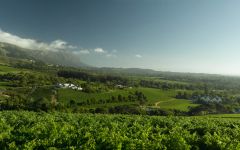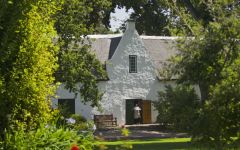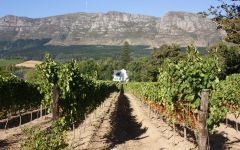Bayten Buitenverwachting Chardonnay 2012



Product Details
Your Rating
Somm Note
Winemaker Notes
Blend: 100% Chardonnay
Other Vintages
2021-
Wine
Enthusiast
-
Wine
Spectator -
Robert
Parker
-
Wine
Spectator
-
Wine
Spectator
-
Wine
Spectator -
Robert
Parker
-
Wine
Spectator
-
Wine
Spectator
-
Wine
Spectator
-
Wine
Spectator










One of South Africa’s premier wine farms, the beautiful Bayten estate is situated on east-facing slopes of the magnificent Constantiaberg mountain, just south of Cape Town and a few short miles from False Bay. This cool-climate coastal area is renowned for elegant white wines that possess an intense, minerality.
In 1981, the Mueller family purchased the estate and began to replant the vineyards and restore this shining jewel to its former glory. Under the direction of current proprietor Lars Maack, a modern wine cellar was constructed, featuring state-of-the-art winemaking equipment and a temperature controlled barrel maturation area with a capacity of 3,000 barrels.Today Bayten has earned a reputation as the source of some of South Africa’s most exquisite, mineral-tinged white wines. From racy Sauvignon Blancs to elegant Meursault-like Chardonnays, cellar master Hermann Kirschbaum and winemaker Brad Paton continue to craft stunning wines that deliver on that promise to exhilarate the senses.
Bayten’s vineyards, planted on a variety of ancient decomposed granite soils, are dry farmed, with an average yield of five tons per hectare. The farm embraces a variety of holistic farming practices, and even allows free running baboons to perform a natural “green cropping” of sorts. A portion of the estate has been dedicated to a conservancy in order to preserve indigenous flora and fauna, and a section of the vineyards is currently undergoing organic certification. Bayten is also home to one of South Africa’s finest restaurants, consistently rated among the top ten in the country.

One of the most popular and versatile white wine grapes, Chardonnay offers a wide range of flavors and styles depending on where it is grown and how it is made. While it tends to flourish in most environments, Chardonnay from its Burgundian homeland produces some of the most remarkable and longest lived examples. California produces both oaky, buttery styles and leaner, European-inspired wines. Somm Secret—The Burgundian subregion of Chablis, while typically using older oak barrels, produces a bright style similar to the unoaked style. Anyone who doesn't like oaky Chardonnay would likely enjoy Chablis.

With an important wine renaissance in full swing, impressive red and white bargains abound in South Africa. The country has a particularly long and rich history with winemaking, especially considering its status as part of the “New World.” In the mid-17th century, the lusciously sweet dessert wines of Constantia were highly prized by the European aristocracy. Since then, the South African wine industry has experienced some setbacks due to the phylloxera infestation of the late 1800s and political difficulties throughout the following century.
Today, however, South Africa is increasingly responsible for high-demand, high-quality wines—a blessing to put the country back on the international wine map. Wine production is mainly situated around Cape Town, where the climate is generally warm to hot. But the Benguela Current from Antarctica provides brisk ocean breezes necessary for steady ripening of grapes. Similarly, cooler, high-elevation vineyard sites throughout South Africa offer similar, favorable growing conditions.
South Africa’s wine zones are divided into region, then smaller districts and finally wards, but the country’s wine styles are differentiated more by grape variety than by region. Pinotage, a cross between Pinot Noir and Cinsault, is the country’s “signature” grape, responsible for red-fruit-driven, spicy, earthy reds. When Pinotage is blended with other red varieties, like Cabernet Sauvignon, Merlot, Syrah or Pinot Noir (all commonly vinified alone as well), it is often labeled as a “Cape Blend.” Chenin Blanc (locally known as “Steen”) dominates white wine production, with Chardonnay and Sauvignon Blanc following close behind.
